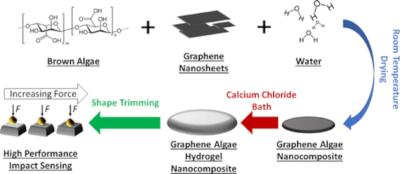The Graphene-Info weekly newsletter
Published: Tue, 03/07/23
The Graphene-Info newsletter (March 9, 2023)
Cannot read this? View it online here
Haydale reports its financial results for H1 FY2023
UK-based graphene developer Haydale announced its unaudited interim results for the six months ended 31 December 2022 (H1 FY2023). Revenues were £1.78 million (up 50% from H1 FY2022), and operating loss was £1.89 million (up from £1.75 million in 2022). At the end of the year, Haydale had £2.97 million, following a successful fund raise of £5.14 million in September 2022.
The updates that it is starting to sell its biomedical inks in Europe, with advanced trials being conducted by several parties which include electronic blood glucose reader compatibility tests.
Versarien announces launch of Umbro's ProTraining Elite range incorporating its graphene technology
Versarien has announced the launch of Umbro's ProTraining Elite range, including garments incorporating the Company's Graphene-Wear technology.
Versarien has been working with Umbro since 2018 and these are the first products to be launched in Europe incorporating the Company's technology. Umbro's new ProTraining Elite long-sleeve running tops, baselayers and running tights have Versarien's Graphene-Wear ink formula printed on the inside. The Graphene-Wear formula features novel properties that will allow wearers to experience enhanced thermal transmittance, increased moisture management, with improved drying rate, without compromising air or water vapor permeability. In particular, these three garments will benefit significantly from applying Graphene-Wear as they are being worn in circumstances where maintaining core body temperature is more desirable and difficult to achieve. The garments also have Versarien's Graphene-Wear trademark applied.
Edible graphene bio-sensors based on seaweed could take over the field of wearable health monitors
Scientists at the University of Sussex and the University of Brighton have developed health sensors using natural elements like rock salt, water and seaweed, combined with graphene.
Since they are made with ingredients found in nature, the sensors are fully biodegradable, making them more environmentally friendly than commonly used rubber and plastic-based alternatives. Their natural composition also places them within the emerging scientific field of edible electronics – electronic devices that are safe for a person to consume.
Graphene quantum dots could improve magnetic field sensors
Researchers from the University of California Santa Cruz, University of Manchester and Japan's International Center for Materials Nanoarchitectonics and National Institute for Materials Science have used a scanning tunnelling microscope to create and probe single and coupled electrostatically defined graphene quantum dots, to investigate the magnetic-field responses of artificial relativistic nanostructures.
Trapped electrons traveling in circular loops at extreme speeds inside graphene quantum dots are highly sensitive to external magnetic fields and could be used as novel magnetic field sensors with unique capabilities. Although graphene electrons do not move at the speed of light, they exhibit the same energy-momentum relationship as photons and can be described as "ultra-relativistic." When these electrons are confined in a quantum dot, they travel at high velocity in circular loops around the edge of the dot.
Metalgrass LTD
9 Har Tsin St.
Kfar Sava Hasharon 4430809
ISRAEL
Unsubscribe | Change Subscriber Options





